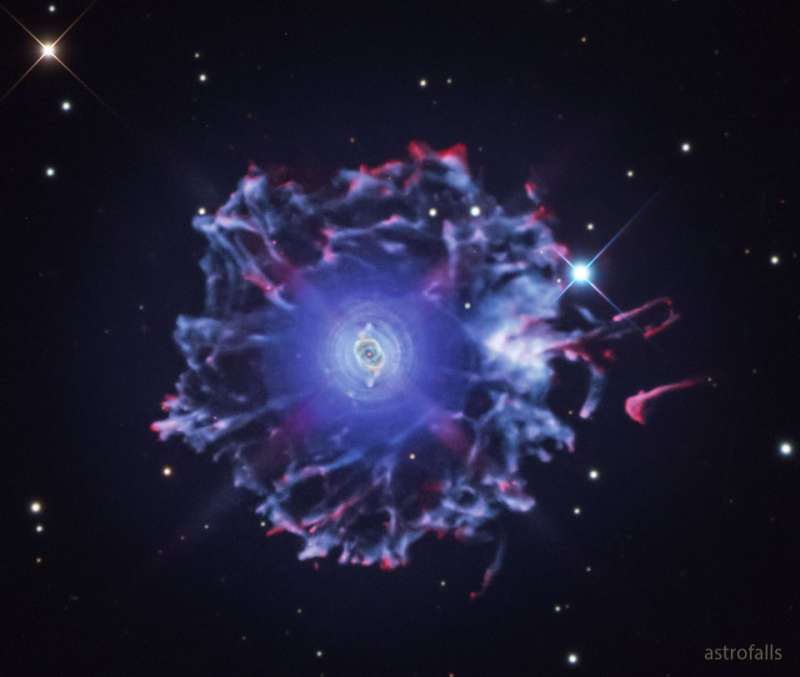Credit & Copyright: Bray Falls
Explanation:
What created the unusual halo around the Cat's Eye nebula?
No one is sure.
What is sure is that
the Cat's Eye Nebula
(NGC 6543) is one of the best known
planetary nebulae on the sky.
Although haunting symmetries are seen
in the bright central region,
this image was taken to feature its intricately structured outer halo,
which spans over three
light-years across.
Planetary
nebulae have long been appreciated as a final phase
in the life of a Sun-like star.
Only recently however, have some planetaries been
found to have expansive halos,
likely formed from material shrugged off during earlier
puzzling episodes in the
star's evolution.
While the planetary nebula phase is
thought to last for around 10,000 years,
astronomers estimate the age of the
outer filamentary portions of the
Cat's Eye Nebula's halo to be 50,000 to 90,000 years.
1999 2000 2001 2002 2003 2004 2005 2006 2007 2008 2009 2010 2011 2012 2013 2014 2015 2016 2017 2018 2019 2020 2021 2022 2023 2024 2025 |
Yanvar' Fevral' Mart Aprel' Mai Iyun' Iyul' Avgust Sentyabr' Oktyabr' Noyabr' Dekabr' |
NASA Web Site Statements, Warnings, and Disclaimers
NASA Official: Jay Norris. Specific rights apply.
A service of: LHEA at NASA / GSFC
& Michigan Tech. U.
|
Publikacii s klyuchevymi slovami:
Cat's Eye Nebula - planetary nebula - tumannost' Koshachii glaz - Planetarnaya tumannost'
Publikacii so slovami: Cat's Eye Nebula - planetary nebula - tumannost' Koshachii glaz - Planetarnaya tumannost' | |
Sm. takzhe:
Vse publikacii na tu zhe temu >> | |
